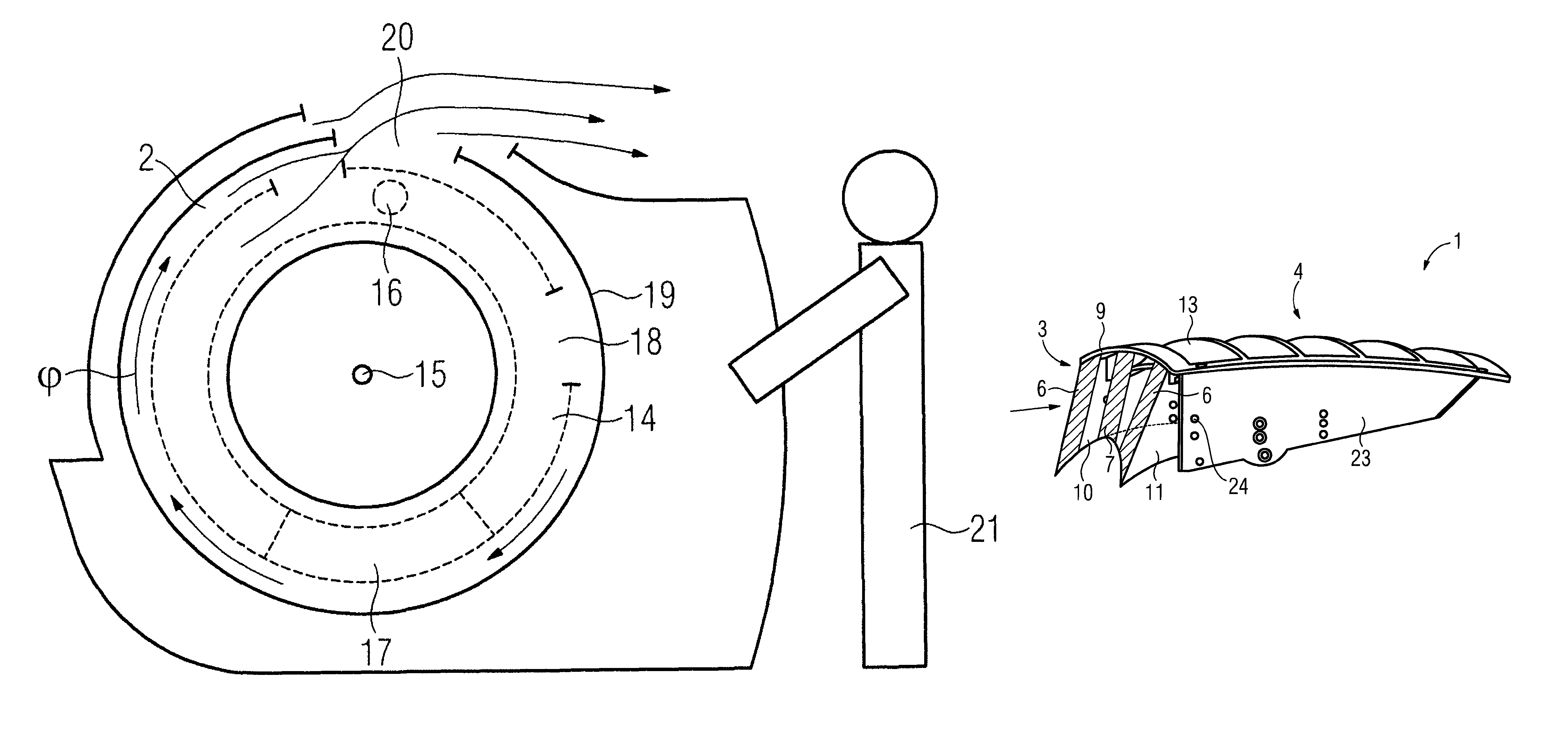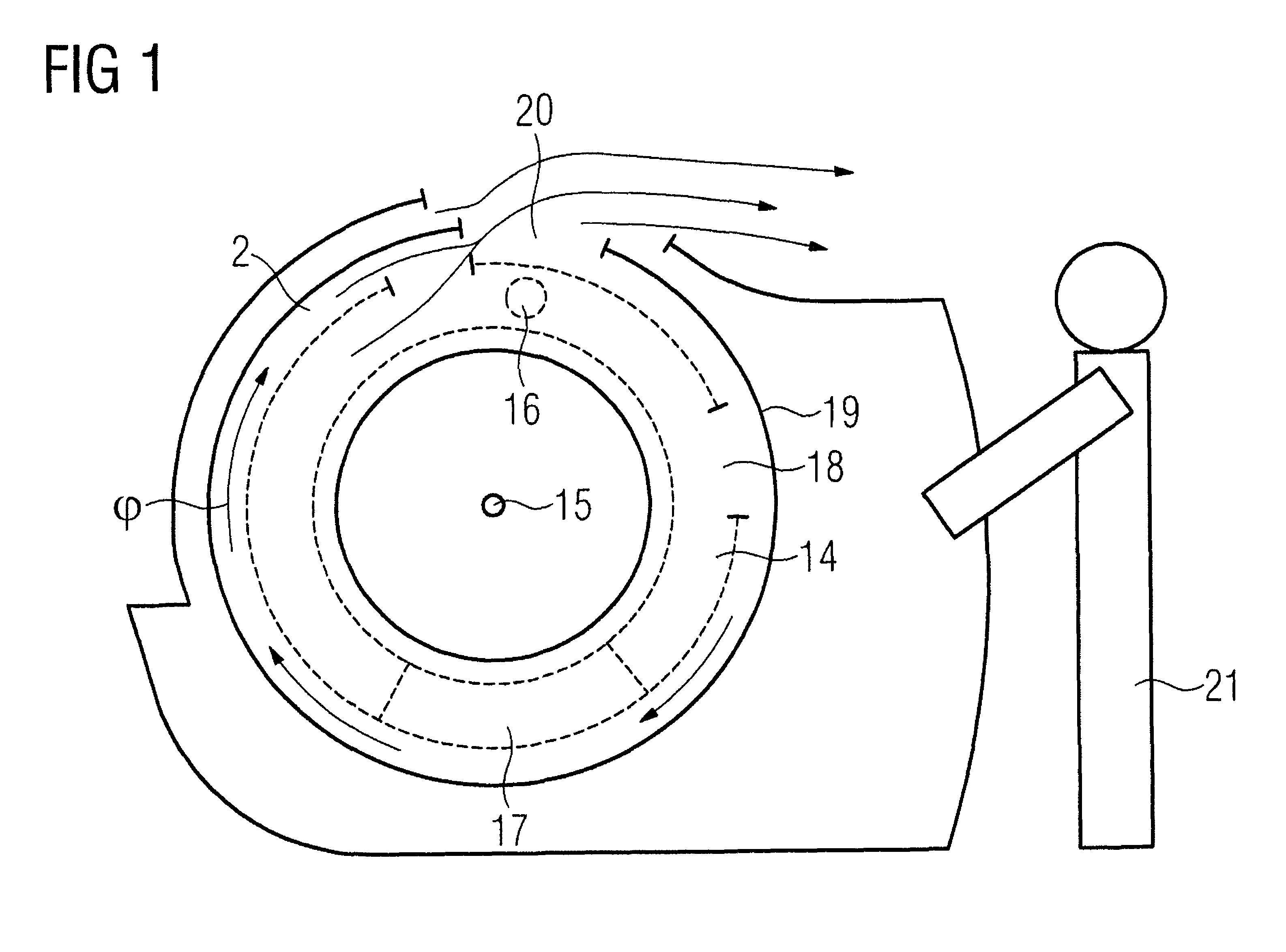Tomography apparatus with an annular airflow channel with an air-diverting ventilation element
a technology of annular channel and ventilation element, which is applied in the field of tomography apparatus with annular channel, can solve the problems of high level of x-ray radiation, large challenge, and up to 99% of electrical energy used in generating x-rays, and achieve the effect of further reducing the acoustic emission of the operation of the air-cooled tomography apparatus
- Summary
- Abstract
- Description
- Claims
- Application Information
AI Technical Summary
Benefits of technology
Problems solved by technology
Method used
Image
Examples
Embodiment Construction
[0030]FIG. 1 shows a tomography apparatus, in this case a computed tomography apparatus, first without a ventilation element 1 shown in FIG. 2 and FIG. 3. Inside the apparatus there is a rotational frame 14 which can rotate on an axis 15 in the φ-direction shown. For cooling electronic components disposed on the rotational frame 14, such as, for example an X-ray tube 16 and a detector 17, the air is first directed toward the inside of the rotational frame 14. The directing of the air can be accomplished by means of a mount, not shown, with which the rotational frame 14 can also be tilted. In the rotational frame 14, a portion of the heat generated by the components is drawn off and subsequently directed through openings 18 to an annular channel 2 formed between a supporting frame 19 and the rotational frame 14. The annular channel 2 contains a gap 20 above the computer tomography apparatus such that the air current flowing through the annular channel 2 can be redirected through the ...
PUM
 Login to View More
Login to View More Abstract
Description
Claims
Application Information
 Login to View More
Login to View More - R&D
- Intellectual Property
- Life Sciences
- Materials
- Tech Scout
- Unparalleled Data Quality
- Higher Quality Content
- 60% Fewer Hallucinations
Browse by: Latest US Patents, China's latest patents, Technical Efficacy Thesaurus, Application Domain, Technology Topic, Popular Technical Reports.
© 2025 PatSnap. All rights reserved.Legal|Privacy policy|Modern Slavery Act Transparency Statement|Sitemap|About US| Contact US: help@patsnap.com



